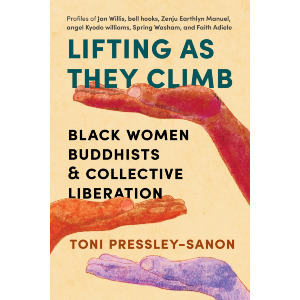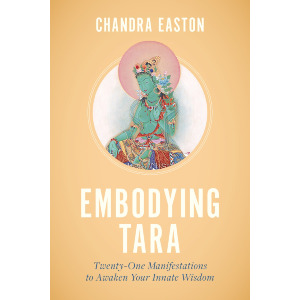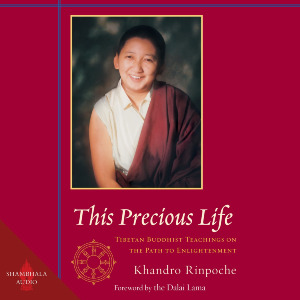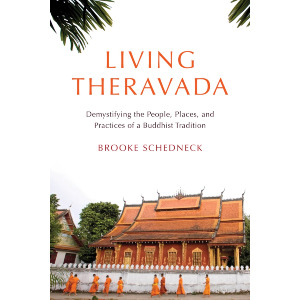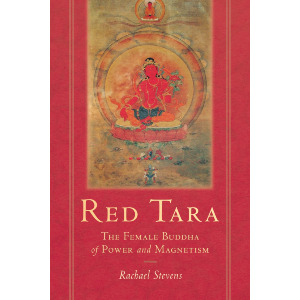| The following article is from the Autumn, 1991 issue of the Snow Lion Newsletter and is for historical reference only. You can see this in context of the original newsletter here. |
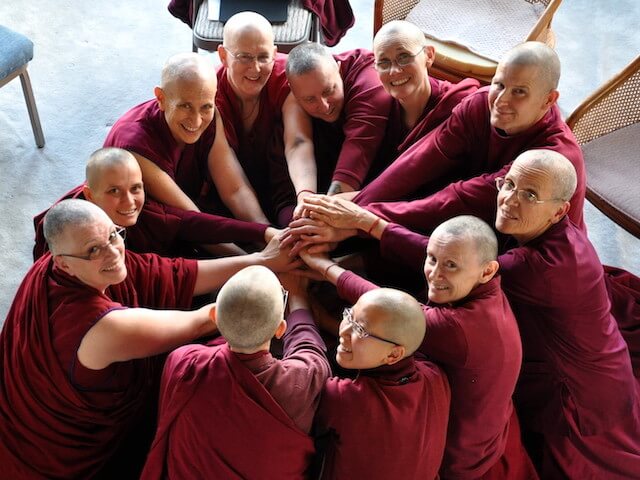
Nunneries were found throughout Tibet. Many were situated in remote, isolated locations, but there were also more than ten nunneries located in and around Lhasa. For the most part monasteries for men and those for women were distinctly separate. In exceptional cases, communities of monks and nuns would be located nearby one anther, studying together with the same teacher and gathering for ceremonies in a common assembly hall. Nuns also stayed together in retreat communities or in caves with one or two nuns as companions. Others stayed with relatives who provided them with daily necessities, leaving them free to attend their practices.
In their daily lives the nuns concentrated on their spiritual practices which consisted of study, mantra recitation, and meditation. Except for those engaged in strict retreat, each resident also shared in the responsibility for maintenance of the nunnery. Education in fundamental subjects such as reading and writing was provided on an individual basis with senior nuns taking responsibility for two or three students. A great deal of emphasis was placed on the memorization of texts, with less attention given to mastering the philosophical topics that are normally undertaken by monks. Lacking opportunities for higher studies in philosophy, fewer nuns became qualified as instructors, and tended to devote themselves chiefly to meditation and liturgical practices instead.
In theory, religious practice by men and women was regarded as equally praiseworthy, but in reality a subtle tendency developed which placed greater value on the efforts of men in spiritual matters. While in the Buddhist view enlightenment is available to men and women without discrimination, there existed and still exists some distinct impression that male rebirth is preferable to female rebirth. These and other factors may help explain why historically fewer women then men entered religious communities.
For years Tibetan nuns have been at much disadvantage since Buddhist religious life tends to center around communities of monks. Being quite humble and self-effacing by nature nuns have remained quietly in the background and continued their practices in solitude. Study of higher philosophical texts became the domain of male scholars and religious education for women was somewhat neglected. Having little access to facilities for such higher studies, women lost faith in their intellectual capabilities and turned to meditation and other practices instead. In these they excelled, and there are numerous references to highly realized female practitioners in historical sources. Still, due to cultural conditioning, social expectations, and their own delusion of incapability, the range of religious opportunities for women was far more limited than for men. These limitations were felt most substantially in the area of education.
In the last decade, much progress has been made in reversing and mitigating these disadvantages. The quality of religious education for women has improved, but there is much more progress to be made. Educated young women who are inclined toward monastic life need to be encouraged and facilities at the nunneries need to be established and systematically organized to provide instruction in both religious and secular fields.
Khachoe Ghakyiling Nunnery
This women's spiritual collective was initially formed in response to the growing influx of women and nuns fleeing Tibet. The severe political, religious and human rights violations by the Chinese, as well as the lack of educational opportunities and deprivation of personal dignity, gave many young women the incentive to brave the Himalayan frontier, even at the possible cost of their lives. Hoping to find suitable spiritual conditions in India and Nepal, they instead discovered that all of the few existing and poorly facilitated nunneries were already filled to overflowing. As a result they have been left stranded without even food and shelter, to say nothing of educational and spiritual opportunities.
In response to the needs of the nuns, the unsurpassably kind and compassionate one, the late Lama Yeshe, graciously accepted the nuns into his monastery. The nunnery project itself was formally established in 1986, with the blessings of Lama Zopa Rinpoche, as Khachoe Ghakyiling Nunnery, a Buddhist Studies Centre for Women affiliated with Kopan Monastery. It is surviving today through the guidance and the kind support of the monastery.
As a Buddhist convent, Khachoe Ghakyiling Nunnery is committed to seed and strengthen the well-being of humankind, in particular that of women. This is being accomplished through working for women's full participation in society, by ending discrimination and developing equal opportunities, and through establishing the value and usefulness of the wisdom, ethics and expertise that result from women's unique experience. As a spiritual women's collective we aim to provide support and solidarity for all women, and as an institute to extend education and training services to women.
Why We Need Your Support
As women practitioners, there is the additional burden of being a female in a culture which devalues us for it. Although Tibetan Buddhism does affirm that women and men are equally capable of reaching enlightenment, the secular culture undermines this view. Therefore it is unfortunately quite common that nuns receive much less support than do monks, little or no funding, poor education and poor facilities. Yet they too are sincere and dedicated practitioners.
There are thirty of us today. Besides the new arrivals from Tibet, we have nuns from the Tibetan exile community, local Buddhists from India and Nepal and many more who would like to join. Unfortunately we already have more than the monastery can afford to accommodate, and we live in crowded and unhygienic conditions. Nonetheless we are appreciative of our good fortune and extremely enthusiastic in our studies and practice. We take part in a full curriculum which includes Tibetan and English language and grammar, memorization of Buddhist root texts, Buddhist philosophy and debating.
All contributions are tax-deductible. Monies are being collected by the central office of the Foundation for the Preservation of Mahayana Buddhism, a non-profit international organization headed by Lama Zopa Rinpoche of Kopan Monastery. If you are in Kathmandu the nuns would like very much to meet with you, show you the progress that has been made and offer a puja. In the future the nuns envision opening a bed and breakfast operation with the nunnery in order to be self-supporting.
Checks should be made out to: FPMT Central Office, PO Box 1778, Soquel, CA 95073. For more information contact: Mary Beth Ackerly, MD, PO Box 223, Schneider Lane, Ruby, NY 12475 (tel. 914-336-6324); or Claire (Cookie) Ritter, 55 Mercer St 5th Floor, New York, NY 10013 (tel. 211-941-1160).





